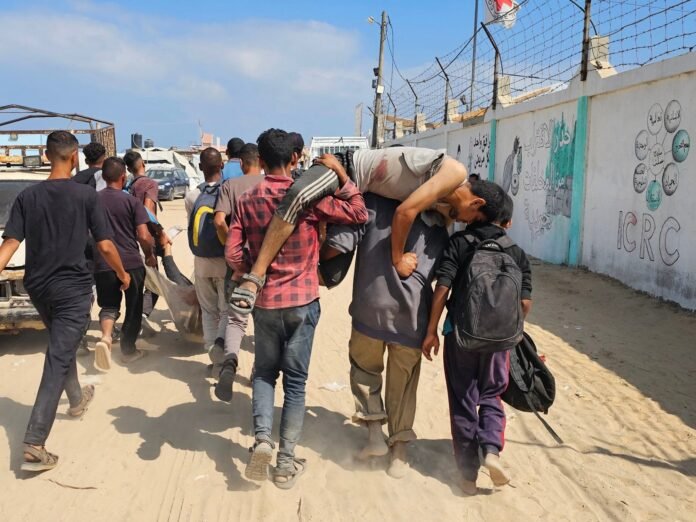Satellite data shows destruction of Rafah before plan to transfer entire population of Gaza to ‘humanitarian city’ in the south.
Demolition operations being conducted by Israel in Gaza’s southern Rafah Governorate have been stepped up sharply, an investigation by media’s Sanad investigations unit has found.
Israel’s defence ministry has announced a plan to relocate 600,000 people into what observers say would be “concentration camps” in the area in southern Gaza, with plans to expand this to the Strip’s entire population.
Sanad’s analysis of satellite imagery up to July 4, 2025, shows the number of demolished buildings in Rafah rising to about 28,600, up from 15,800 on April 4, 2025, according to data from the United Nations Satellite Centre (UNOSAT).
This means that approximately 12,800 buildings were destroyed between early April and early July alone – a marked acceleration in demolitions that has coincided with Israel’s new push into Rafah launched in late March 2025.
Israel’s defence minister, Israel Katz, told reporters on Monday that an initial 600,000 Palestinians living in the coastal al-Mawasi area would be transferred to Rafah, the location for what he called a new “humanitarian city” for Palestinians, within 60 days of any agreed ceasefire deal.
According to Katz, the entire civilian population of Gaza – more than 2 million people – will eventually be relocated to this southern city.
He also stressed that the plan would not be run by the Israeli army, but by international bodies, without specifying which organisations would be implementing it.
Philippe Lazzarini, the head of the United Nations agency for Palestinian refugees (UNRWA) – which has been banned by Israel – warned against the latest mass forced displacement plan.
“This would de facto create massive concentration camps at the border with Egypt for the Palestinians, displaced over and over across generations,” he said, adding that it would “deprive Palestinians of any prospects of a better future in their homeland”.
Israeli political commentator Ori Goldberg told media that the plan was “for all facts and purposes a concentration camp” for Palestinians in southern Gaza, meaning that Israel is committing “what is an overt crime against humanity under international humanitarian law”.
“It should be taken very seriously,” he said, and questioned the feasibility of the task of “concentrating the Palestinian population in a locked city where they would be let in but not let out”.
‘Humanitarian city’
For now, Rafah, which was once home to an estimated 275,000 people, lies largely in ruins. The scale of Israeli destruction since April this year is particularly apparent when examining specific neighbourhoods of Rafah.
Since Israel breached the last ceasefire agreement with Hamas on March 19, its forces have directly targeted several institutions.
Sanad has identified six educational facilities that have been destroyed, including some located in the Tal as-Sultan neighbourhood, west of Rafah City.
However, satellite data shows that several key facilities have been spared; 40 educational institutions – 39 schools and one university – are intact. Eight medical centres also remain standing.
Sanad has concluded that this noticeable pattern of selective destruction strongly suggests that the preservation of these facilities in Rafah is unlikely to be a coincidence.
Rather, it indicates that Israel aims to use these sites in the next phase of its proposed plan to displace the entire population of Gaza to Rafah.
The spared educational and medical buildings already serve as critical humanitarian shelters for tens of thousands of displaced Palestinians.
The war’s initial wave of displacement from northern to southern Gaza resulted in an overwhelming influx of people into the 154 UN facilities across all five governorates of the Gaza Strip, including schools, warehouses and health centres.
According to UNRWA’s Situation Report in January 2024, these facilities were by then sheltering approximately 1.4 million displaced people, an average of 9,000 people per facility, while an additional 500,000 people were receiving support from other services.
The report also notes that in some shelters, the number exceeds 12,000, four times their intended capacity.

